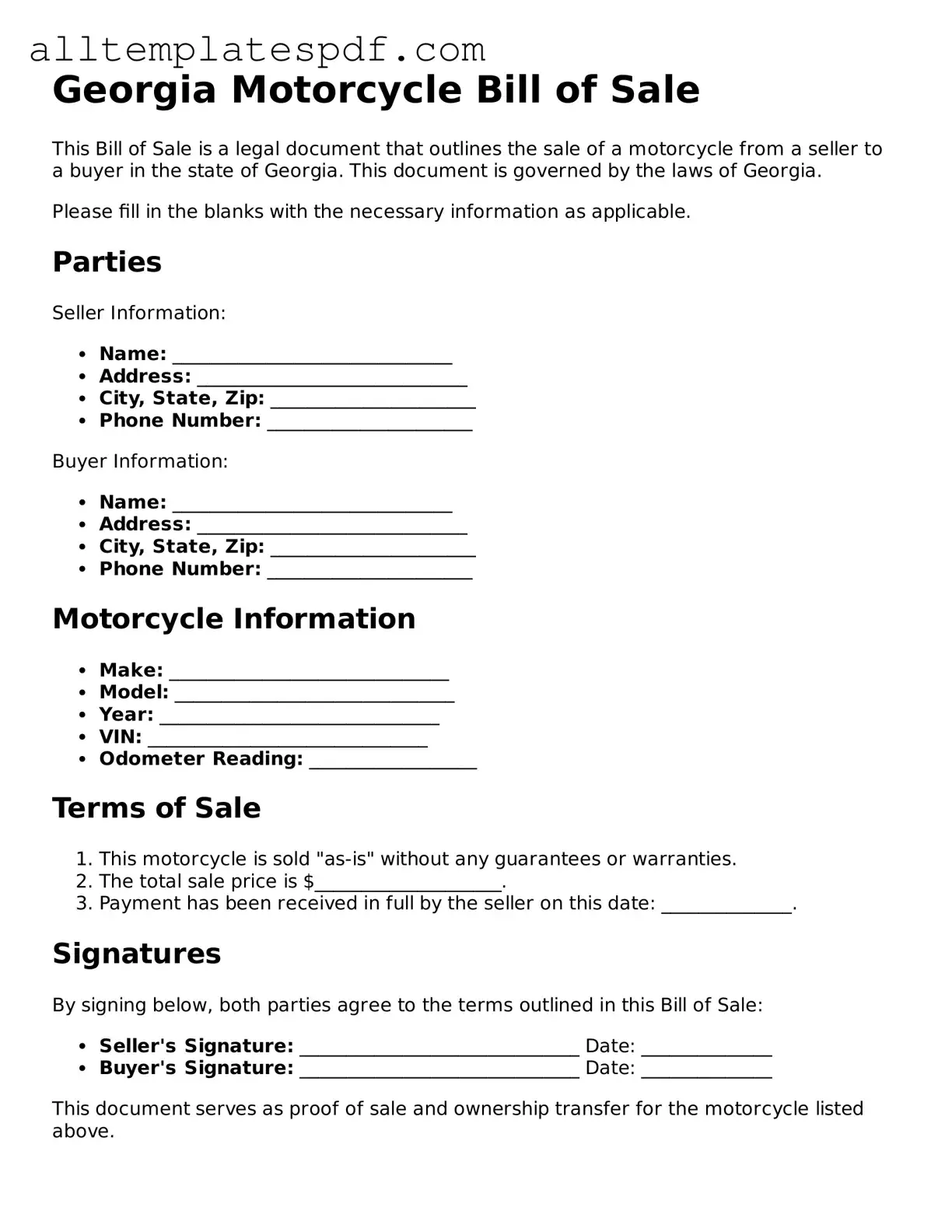Completing the Georgia Motorcycle Bill of Sale form accurately is essential for a smooth transaction. However, individuals often make several common mistakes that can lead to complications. One frequent error is failing to provide the correct vehicle identification number (VIN). The VIN is crucial for identifying the motorcycle, and any discrepancies can cause issues with registration.
Another mistake involves not including the purchase price. This detail is important for both parties, as it establishes the value of the transaction. Leaving this field blank may result in misunderstandings or disputes later on. Additionally, some individuals forget to date the form. The date is significant because it marks the official transfer of ownership.
People also sometimes neglect to include the full names and addresses of both the buyer and the seller. This information is vital for establishing clear ownership and for any future correspondence. Incomplete or incorrect names can complicate the legal aspects of the sale.
Signatures are another area where errors often occur. Both parties must sign the document for it to be valid. Occasionally, one party may forget to sign, or they may sign in the wrong place. This oversight can invalidate the bill of sale and create problems during the registration process.
Moreover, some individuals do not provide accurate descriptions of the motorcycle. Details such as make, model, year, and color are essential for identifying the vehicle. Inaccuracies can lead to confusion and potential legal issues down the line.
Omitting the odometer reading is another common mistake. This information is required by law in many states, including Georgia. Failure to report the correct mileage can raise suspicions about the motorcycle's condition and history.
People may also overlook the need for witnesses or notarization, depending on the circumstances of the sale. While not always required, having a witness or notarizing the document can provide additional protection for both parties.
Lastly, some individuals do not keep a copy of the completed bill of sale. Retaining a copy is important for record-keeping and can serve as proof of the transaction if disputes arise in the future.
